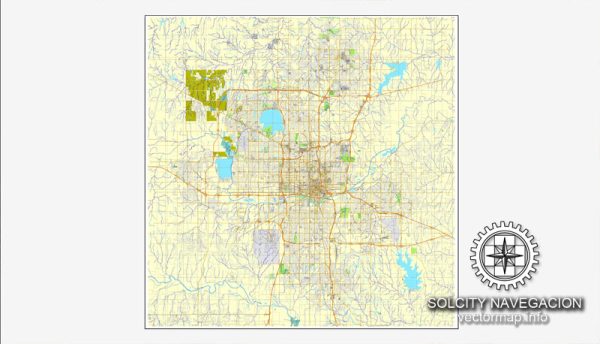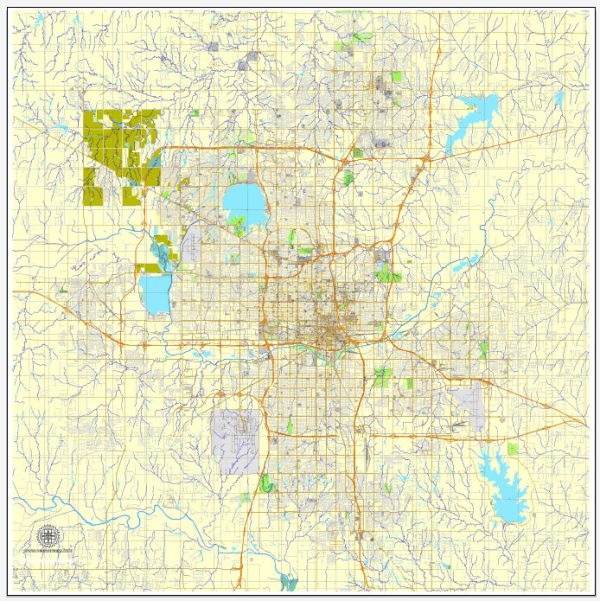Oklahoma City, the capital and largest city of the U.S. state of Oklahoma, has a diverse architectural landscape that reflects its history, economic growth, and evolving cultural influences. Here’s a brief description of some of the notable architectural features and styles you can find in Oklahoma City:
- Historic Buildings: Oklahoma City has several historic buildings that offer a glimpse into the city’s past. Notable examples include the Skirvin Hilton Hotel, which dates back to 1911 and is a prime example of Beaux-Arts architecture, and the Oklahoma State Capitol building, which showcases Neoclassical design and is one of the city’s iconic landmarks.
- Art Deco Influence: The city also has a significant Art Deco architectural presence, with structures like the First National Center and the historic Criterion Theater. The First National Center, in particular, is an excellent example of the Art Deco style, with its intricate detailing and geometric patterns.
- Mid-Century Modern: Oklahoma City features numerous Mid-Century Modern buildings that emerged in the post-World War II era. These buildings often incorporate clean lines, large windows, and open spaces. The Gold Dome, a geodesic dome structure that once housed a bank, is a notable example of Mid-Century Modern architecture.
- Contemporary Architecture: As the city has grown and developed, it has embraced contemporary architecture. Notable examples include the Chesapeake Energy Arena, home to the NBA’s Oklahoma City Thunder, and the Devon Energy Center, a modern skyscraper that is a prominent part of the city’s skyline.
- Cultural Centers: Oklahoma City’s architectural landscape also includes cultural centers like the Oklahoma City Museum of Art, which features a modern and dynamic design, and the National Cowboy & Western Heritage Museum, designed with a Western flair.
- Residential Neighborhoods: Oklahoma City has a mix of architectural styles in its residential neighborhoods. You can find everything from historic homes in Heritage Hills and Mesta Park to more modern and suburban-style homes in the outlying areas.
- Urban Development: The city has seen significant urban development, with a focus on creating walkable, vibrant districts. The Bricktown district is a prime example, with its blend of historic buildings, new construction, and a lively entertainment and dining scene.
- Tribal Influence: Due to its location in the heart of Native American tribal lands, Oklahoma City has some architectural elements that reflect the culture of the Native American tribes. These can be seen in some public buildings and cultural centers throughout the city.
- Religious Architecture: The city has a variety of churches and religious buildings, ranging from traditional Gothic-style cathedrals to more contemporary designs.
Oklahoma City’s architecture is a reflection of its growth and transformation over the years. It combines elements of the city’s rich history with a growing emphasis on modern design and development, making it an interesting place for architectural enthusiasts and history buffs alike.




 Author: Kirill Shrayber, Ph.D.
Author: Kirill Shrayber, Ph.D.